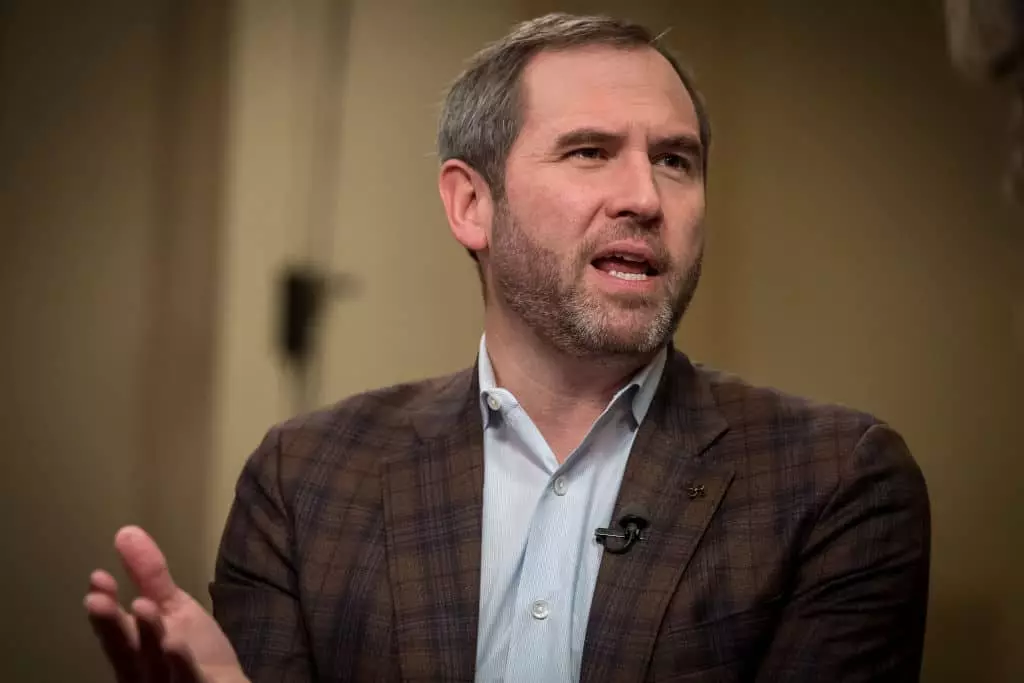In recent days, the cryptocurrency community has erupted in heated discussions regarding the potential composition of a new U.S. digital asset reserve. The focus has primarily been on the controversial token XRP, which has garnered significant criticism from factions within the crypto space, particularly Bitcoin proponents. This growing tension underscores the intricate dynamics at play in the evolving landscape of digital currencies, revealing underlying ideological divides and market interests.
Brad Garlinghouse, CEO of Ripple, has stepped into this fray, vocally defending XRP’s position and urging for a more collaborative atmosphere among cryptocurrencies. He took to social media platform X to express his perspective, emphasizing that the crypto industry cannot afford to be divisive. In his message, he articulated the need for cooperation to achieve shared objectives, highlighting that the future of digital assets should transcend the confines of individual token superiority. By advocating for a “multichain world,” Garlinghouse signaled a shift away from the prevalent maximalist perspective—that only Bitcoin or a select few tokens can dominate the market.
His assertion that maximalism threatens the evolution of the entire cryptocurrency ecosystem targets the culture of exclusivity that some factions within the community have adopted. Garlinghouse’s remarks resonated with many who believe that progress necessitates an environment where diverse cryptocurrencies can coexist and thrive together.
Despite Garlinghouse’s call for unity, the entrenched beliefs of Bitcoin maximalists proved resilient. Critics, particularly those aligned with the Bitcoin narrative, have accused Ripple and its CEO of manipulation and self-interest. This backlash from figures such as Michelle Weekly, a staunch Bitcoin advocate, illustrates how deeply rooted the skepticism is regarding Ripple’s intentions. Weekly accused Garlinghouse of hypocrisy, arguing that his previous lobbying efforts against Bitcoin’s recognition demonstrated a lack of genuine commitment to the collaborative spirit he now espouses. This exchange highlights the ongoing tension within the crypto ecosystem, revealing how entrenched ideologies can stymie consensus and hinder potential advancements for the broader community.
The Regulatory Dilemma
The backdrop of this controversy includes a palpable sense of urgency surrounding the U.S. government’s exploration into digital asset reserves, an initiative recently endorsed by former President Donald Trump. This endeavor attempts to establish a strategic framework for cryptocurrency recognition and inclusion at federal levels. However, the question of which cryptocurrencies should be considered raises complexities, particularly when there are competing interests and narratives.
Vocal advocates have emerged from both sides of this debate. Ryan Selkis, founder of Messari, represents the faction that staunchly opposes the inclusion of tokens like XRP in any reserve, branding such a move as “toxic.” His assertions reflect the broader apprehension that the incorporation of centralized assets into a public reserve could undermine the ideals upon which cryptocurrencies were founded—decentralization, freedom, and financial independence. Similarly, Jack Maller, the CEO of Strike, has reinforced this standpoint, arguing that Bitcoin’s decentralized framework starkly contrasts with the corporate-controlled nature of XRP. Maller’s conviction that Bitcoin alone embodies the essence of resilience and economic sovereignty reveals the polarizing nature of this ongoing discourse.
As discussions continue regarding the structure of a potential U.S. digital asset reserve, the clash between differing ideologies—maximalism versus a more inclusive approach—will likely persist. The crypto world finds itself at a crossroads, where the ideals of decentralization and collaboration must be weighed against the realities of corporate interests and regulatory oversight.
Garlinghouse’s entreaty for cooperation may serve as a crucial reminder that the path forward for cryptocurrency may not solely rest on the shoulders of a single reigning token. Rather, the digital financial landscape may thrive through diversity, collective input, and a shared commitment to fostering a more inclusive environment. How stakeholders respond to these provocations will ultimately shape the future of digital assets and the principles governing their legitimacy. Balancing these often-conflicting interests will require a concerted effort, fostering dialogue that seeks mutual understanding rather than division.















